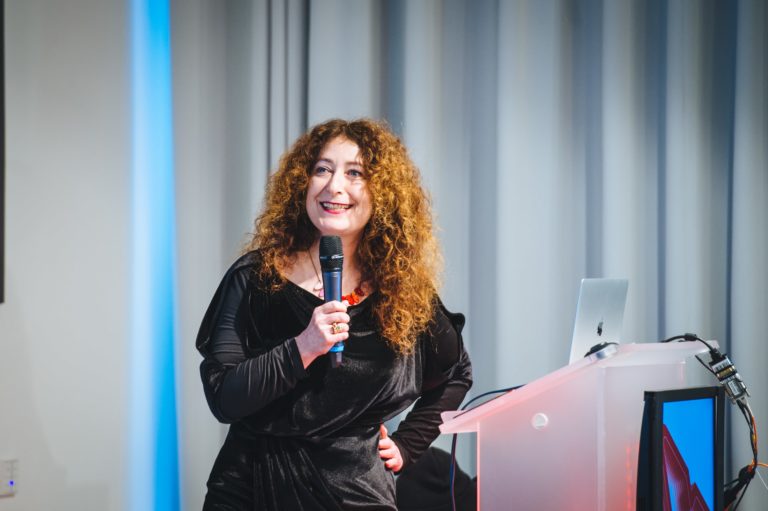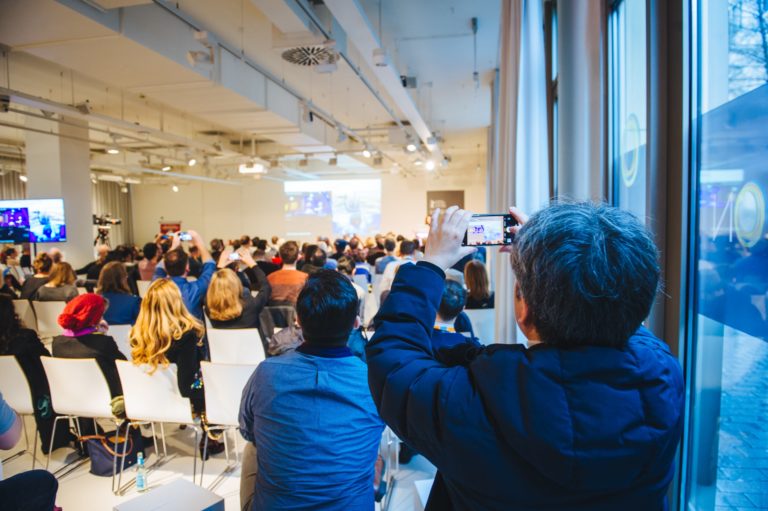Berlinale was a VRlinale, too
Attendees to the third annual EFM VR Now Summit filled the large room. Crisp and bright inside, the venue was a stark contrast to the dreary gray that is the hallmark of Berlin winters. In the midst of the Berlinale film festival, the Summit provides the chance to hear a host of speakers and several panels elaborate about the state of virtual reality and 360 video, and the interplay with film, television and immersive media.
Scary Monsters and Super Creeps
Warner Bros. and Starlounge had the makers of the companion VR piece to Fatih Akin’s “The Golden Glove” on hand to kick off the talks. J. Lee Williams and Timur Musabay of Occupied VR explained how Akin’s horror flick (which was in competition at the film festival) was a true story about a German serial killer. The film set consisted of meticulous recreations of both the namesake Goldenen Handschuh bar and the serial killers super-creepy apartment. Before the set was dismantled, it was offered to the Occupied VR team, who were able to capture enough footage to create an escape room piece. Attendees had the chance to preview the project.
Distribution First
Liz Rosenthal, Founder of Power to the Pixel, and programmer of Venice International Film Festival’s Venice VR, spoke at length about the various modes of distribution available to VR makers, advising artists to start first knowing how and where the piece should debut before diving into the VR shoot. She suggested traditional media (The New York Times, VICE, The Guardian et al) as well as health care and transportation as a few overlooked distribution opportunities. She also noted the importance for cinematic VR makers in designing a film festival strategy in advance, (and casually mentioned that the Venice VR call is open until May 31st).

Investment is Location-Based, too
Probably the only person in the room to have jumped out of a helicopter or ziplined while in headset, Joanna Popper, Global Head of VR for Location Based Entertainment for HP, shared some of the global developments in VR in terms of production and marketing. One point she shared was the need to go where the investors are. The popularity of VR companies located in Los Angeles means that the Silicon Valley investors are not as easily able to find work or companies to grow and support.
More Myth for More Feels
Bob Cooney gave a split talk with two themes, the first about the need for location-based VR to think first in terms of retail (be customer-first!) and not just VR focused. Consumers do not have a clear sense of what VR is or, more importantly, what VR can do for them. The second part of the talk discussed the need for stories to follow “The Hero’s Journey.” The latter was to explain the consumer (or society’s) search for meaning and transformation and had quotes peppered with insight from Joseph Campbell, the famed anthropologist who studied myth.

Mountains Have Reached their Peak
Four years of experimentation with VR gave Alexander Knetig, Director of Digital Department, ARTE, a clear sense of what worked and what did not. ARTE was a pioneer in Europe in terms of VR/360 video production, but they did not find easy success with proprietary apps and content, at one point asking “how many mountain tops in 360° can you see?” They have since shifted towards games with an emphasis on story.
A panel moderated by Variety’s Henry Chu talked about how film companies are using VR to attract moviegoers to the films and to deepen their engagement.
Kudos to the organizers for maintaining a relatively strict “no talking in the hall” policy. Attendees had the chance to listen without unrelenting distractions or people constantly entering and exiting.
When the Summit ended, and attendees left the bright white inner sanctum filing into the much darker, and colder, evening for a party at Berlin hotspot, The Grand, organized by Starlounge’s Lillemor Mallau.
Tim Rittman confirmed that VR Now Con will return in November.





